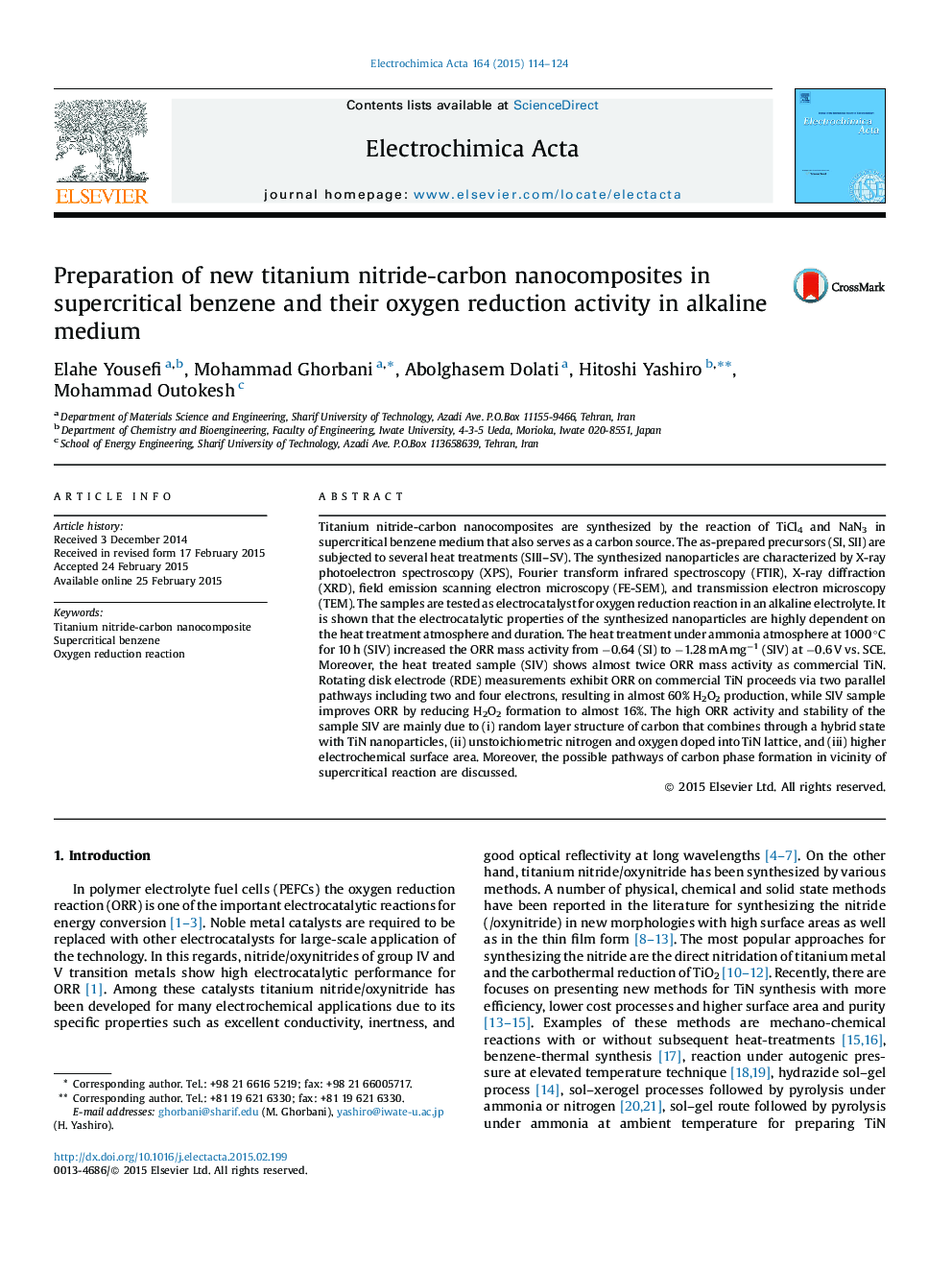| کد مقاله | کد نشریه | سال انتشار | مقاله انگلیسی | نسخه تمام متن |
|---|---|---|---|---|
| 184282 | 459572 | 2015 | 11 صفحه PDF | دانلود رایگان |
• TiN/C/graphene composite (SIV) was synthesized using supercritical benzene medium.
• SIV catalyst shows high ORR activity due to both TiN and graphene phases.
• SIV improves ORR via a mainly 4-electron pathway to form water and around 16% H2O2.
• SIV exhibits high stability due to reduce H2O2 and prevent surface poisoning.
Titanium nitride-carbon nanocomposites are synthesized by the reaction of TiCl4 and NaN3 in supercritical benzene medium that also serves as a carbon source. The as-prepared precursors (SI, SII) are subjected to several heat treatments (SIII–SV). The synthesized nanoparticles are characterized by X-ray photoelectron spectroscopy (XPS), Fourier transform infrared spectroscopy (FTIR), X-ray diffraction (XRD), field emission scanning electron microscopy (FE-SEM), and transmission electron microscopy (TEM). The samples are tested as electrocatalyst for oxygen reduction reaction in an alkaline electrolyte. It is shown that the electrocatalytic properties of the synthesized nanoparticles are highly dependent on the heat treatment atmosphere and duration. The heat treatment under ammonia atmosphere at 1000 °C for 10 h (SIV) increased the ORR mass activity from −0.64 (SI) to −1.28 mA mg−1 (SIV) at −0.6 V vs. SCE. Moreover, the heat treated sample (SIV) shows almost twice ORR mass activity as commercial TiN. Rotating disk electrode (RDE) measurements exhibit ORR on commercial TiN proceeds via two parallel pathways including two and four electrons, resulting in almost 60% H2O2 production, while SIV sample improves ORR by reducing H2O2 formation to almost 16%. The high ORR activity and stability of the sample SIV are mainly due to (i) random layer structure of carbon that combines through a hybrid state with TiN nanoparticles, (ii) unstoichiometric nitrogen and oxygen doped into TiN lattice, and (iii) higher electrochemical surface area. Moreover, the possible pathways of carbon phase formation in vicinity of supercritical reaction are discussed.
Journal: Electrochimica Acta - Volume 164, 10 May 2015, Pages 114–124
